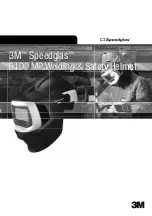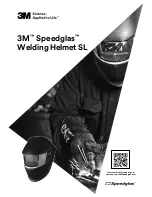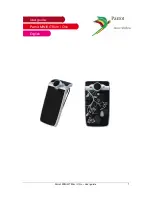
13
3.2) Comfort padding assembly
3.2.1 Insert the liner correctly into the helmet and fit it well against the base.
3.2.2 Insert the left front flap into the seat on the frame fixed to the polystyrene inner shell and push it
slightly downwards until it is completely locked (Fig. 10). Follow the same steps for the right and
central front flap.
3.2.3. Insert the left and right side flaps between the inner and outer shell (Fig. 9).
3.2.4 Make sure that the back of the liner is placed on the polystyrene inner shell. Close the rear
zip and make sure you place the puller back in line with its elastic band “D” (Fig. 8).
3.2.5 Insert the left fastening chin strap in the slot of the left cheek pad (Fig. 7). Repeat this step for the
right fastening chin strap and cheek pad.
WARNING!!!
•
Remove the padding only when cleaning or washing is required.
•
Never use the helmet if the inner comfort padding and the cheek pads have not been correctly and
completely fitted.
•
Delicately hand-wash in lukewarm water (max. 30°C) and neutral soap.
•
Rinse with cold water and allow drying at room temperature, away from direct sunlight.
•
Never machine-wash the inner comfort padding.
•
The inner polystyrene is an easily deformable material. It is apt to change or get partially destroyed
to help absorb shocks. Clean it with a damp cloth and allow it to dry at room temperature away
from direct sunlight.
•
Do not modify or alter the helmet’s internal polystyrene components in any way.
•
Never use tools or equipment of any sort to carry out the steps described above.
4) VENTILATION
SYSTEM
4.1) TOP FRONTAL VENTILATION SYSTEM (Fig. 11)
The air intake located on the front part of the shell allows conveying air into the shell.
A) closed
B) open
4.2) SIDE VENTILATION SYSTEM (Fig. 12)
The side air intakes allow conveying air into the shell and the two slide-over side vanes allow warm and
stale air to flow out, ensuring a constant change of air. To open and close the side ventilation system
operate the side vanes that automatically control also the air intakes.
A) closed
B) open
4.3) REAR EXTRACTOR (Fig. 13)
The rear extractor allows warm and stale air to flow out even more.
Содержание N33EVO
Страница 50: ...50...
Страница 51: ...51 E v A...
Страница 55: ...10 3 1 5 3 2 3 2 1 3 2 2 10 3 2 3 9 3 2 4 D 8 3 2 5 7 30 C 4 4 1 11 B 4 2 12 B 4 3 13 55...
Страница 56: ...Fig 1 Fig 3 Fig 4 Fig 2 Fig 5 A...
Страница 57: ...Fig 6 B C Fig 9 Fig 7 Fig 8...
Страница 58: ...Fig 11 A Fig 11 B Fig 12 A Fig 10 Fig 12 B...
Страница 59: ...Fig 14 Fig 13...














































